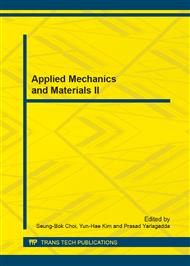p.173
p.177
p.181
p.186
p.191
p.197
p.203
p.209
p.213
The Simplified Flow Field Analysis Method of Multi-Layers Parallel Plates Perfusion Bioreactor
Abstract:
Multi-layers parallel plates perfusion bioreactor has the potential advantage in cells cultivation of tissue engineering and good scalability for cells cultivation on a large scale. It is necessary to analyze the distribution of flow shear stress (FSS) of bioreactors which has strong influence on the growth of cells. The result of meshing was not satisfactory because of the complexity of multi-layers parallel plates when using computational fluid dynamics (CFD) to analyze the FSS, and the amount of calculation was great and complex especially under the process of influence on FSS caused by analyzing the different structure. The new method of simplified flow field analysis was presented in this paper, which was based on relation between FSS and flow and made the process simpler by analyzing distribution of rate instead of FSS. The simulation result showed that this method can satisfy the requirement of precision and provide reference for the analysis of the flow field which had the established relationship between structural parameters and laminar flow within it.
Info:
Periodical:
Pages:
191-196
Citation:
Online since:
December 2013
Authors:
Keywords:
Price:
Сopyright:
© 2014 Trans Tech Publications Ltd. All Rights Reserved
Share:
Citation:


